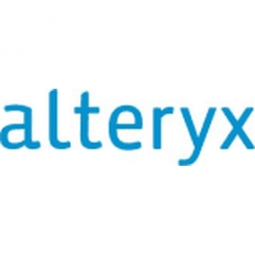Region
- America
Country
- United States
Product
- Alteryx
Tech Stack
- SQL
- Excel
Impact Metrics
- Productivity Improvements
Technology Category
- Analytics & Modeling - Big Data Analytics
Applicable Industries
- Healthcare & Hospitals
Applicable Functions
- Quality Assurance
Use Cases
- Predictive Quality Analytics
Services
- Data Science Services
About The Customer
The customer in this case study is the Colorado Hospital Association (CHA). The CHA is an organization that works with Colorado hospitals and policy makers to make better decisions. The director of analytics at the CHA, Alexandra, has spent over half a decade analyzing medical data. The analytics team at the CHA also includes healthcare data analysts like Dominick Kuljis, who joined the CHA with some exposure to SQL and Excel, but no hard-core programming experience. The team's goal is to use their backgrounds in public health and chemistry to advance healthcare.
The Challenge
The Colorado Hospital Association (CHA) was facing a significant challenge in the form of the opioid epidemic. Opioids, traditionally used to treat pain in the emergency department, were contributing to prescription abuse and serving as a gateway to illegal drugs. According to data from the Colorado Department of Health Care Policy and Finance, one Colorado resident died every 36 hours from overdose in 2015. From a data perspective, the situation was messy. The CHA needed to join emergency department data with claims base data to see what was happening across hospitals. Each question seemed to lead to another, creating a complex and challenging situation.
The Solution
The solution to the CHA's challenge was the Alteryx platform. Alteryx is a data analytics platform that allows users to perform complex analyses without needing extensive programming knowledge. When Dominick joined the CHA, he was concerned that he would end up isolated deep in the 'technical weeds' of data analysis. However, the Alteryx platform allowed him to focus on using his background in public health and chemistry to advance healthcare. With Alteryx, Dominick felt like he was a team of 10 people, rather than just one, even very early on in his use of the platform.
Operational Impact

Case Study missing?
Start adding your own!
Register with your work email and create a new case study profile for your business.
Related Case Studies.

Case Study
Hospital Inventory Management
The hospital supply chain team is responsible for ensuring that the right medical supplies are readily available to clinicians when and where needed, and to do so in the most efficient manner possible. However, many of the systems and processes in use at the cancer center for supply chain management were not best suited to support these goals. Barcoding technology, a commonly used method for inventory management of medical supplies, is labor intensive, time consuming, does not provide real-time visibility into inventory levels and can be prone to error. Consequently, the lack of accurate and real-time visibility into inventory levels across multiple supply rooms in multiple hospital facilities creates additional inefficiency in the system causing over-ordering, hoarding, and wasted supplies. Other sources of waste and cost were also identified as candidates for improvement. Existing systems and processes did not provide adequate security for high-cost inventory within the hospital, which was another driver of cost. A lack of visibility into expiration dates for supplies resulted in supplies being wasted due to past expiry dates. Storage of supplies was also a key consideration given the location of the cancer center’s facilities in a dense urban setting, where space is always at a premium. In order to address the challenges outlined above, the hospital sought a solution that would provide real-time inventory information with high levels of accuracy, reduce the level of manual effort required and enable data driven decision making to ensure that the right supplies were readily available to clinicians in the right location at the right time.

Case Study
Gas Pipeline Monitoring System for Hospitals
This system integrator focuses on providing centralized gas pipeline monitoring systems for hospitals. The service they provide makes it possible for hospitals to reduce both maintenance and labor costs. Since hospitals may not have an existing network suitable for this type of system, GPRS communication provides an easy and ready-to-use solution for remote, distributed monitoring systems System Requirements - GPRS communication - Seamless connection with SCADA software - Simple, front-end control capability - Expandable I/O channels - Combine AI, DI, and DO channels

Case Study
Driving Digital Transformations for Vitro Diagnostic Medical Devices
Diagnostic devices play a vital role in helping to improve healthcare delivery. In fact, an estimated 60 percent of the world’s medical decisions are made with support from in vitrodiagnostics (IVD) solutions, such as those provided by Roche Diagnostics, an industry leader. As the demand for medical diagnostic services grows rapidly in hospitals and clinics across China, so does the market for IVD solutions. In addition, the typically high cost of these diagnostic devices means that comprehensive post-sales services are needed. Wanteed to improve three portions of thr IVD:1. Remotely monitor and manage IVD devices as fixed assets.2. Optimizing device availability with predictive maintenance.3. Recommending the best IVD solution for a customer’s needs.

Case Study
HaemoCloud Global Blood Management System
1) Deliver a connected digital product system to protect and increase the differentiated value of Haemonetics blood and plasma solutions. 2) Improve patient outcomes by increasing the efficiency of blood supply flows. 3) Navigate and satisfy a complex web of global regulatory compliance requirements. 4) Reduce costly and labor-intensive maintenance procedures.

Case Study
Cloud-based healthcare solution for Royal Philips
Royal Philips wanted to launch its cloud-based healthcare solution HealthSuite Digital Platform in China to deliver services to help cope with challenges related to urbanization and population growth. Philips wanted to achieve this goal by combining mobile, cloud computing and big data technologies. To bring this platform and product to market, Philips required cloud computing and local technical service capabilities in China, in addition to a flexible IT infrastructure that could handle user requests.








